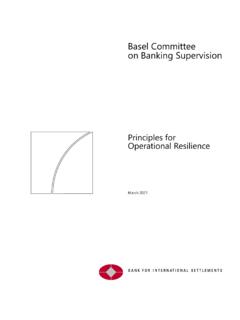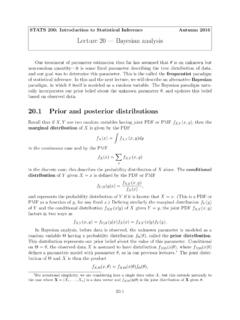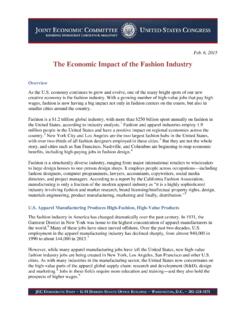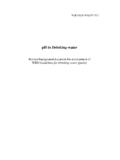Transcription of Peroxide-Forming Chemicals (PFCs)
1 University Health and Safety Guidance Document GD peroxide Forming Chemicals Page 1 of 7 AUG 2019 Peroxide-Forming Chemicals (PFCs) Peroxide-Forming Chemicals (PFCs) are Chemicals that can auto-oxidize with atmospheric oxygen under ambient conditions to form organic peroxides (contains an -O O- bond). peroxide formation can be initiated by exposure to air, self-polymerization, or solvent impurities. Once formed, organic peroxides are sensitive to thermal or mechanical shock and can be violently explosive in concentrated solutions or as solids. Many common organic laboratory solvents, such as ethers or tetrahydrofuran, can form peroxides if not stored or used appropriately. A larger list of Chemicals , including common laboratory Chemicals such as isopropyl alcohol, can also form peroxides if best practices are not followed.
2 Identifying peroxide Formers According to Prudent Practices (Chapter Azos, Peroxides, and Peroxidizables), any organic compound with a weak C H bond is at risk for forming peroxides depending on the conditions or contaminants the chemical is exposed to. Below are some ways of identifying those compounds that are at a higher risk for peroxide formation. Check lists of Class A, B, C, and D peroxidizable compounds. UMN maintains an extensive list of peroxide forming Chemicals with references that include any peroxide formation data and incidents reported for those compounds. Lists can also be found in Prudent Practices and from chemical manufacturers. Safety Data Sheets have a section titled Hazards not otherwise classified (HNOC) which will state May form explosive peroxides for many peroxide formers.
3 Check container label warning statements ( NOTE: peroxide build up , Contains no preservatives , HPLC Grade Stabilized or Inhibitor-free ). None of these methods of identifying PFCs are all-inclusive, so it s always best practice to work at the highest hazard level as a precaution and dispose of all old/expired organic Chemicals through the Regulated Waste Program. Classes of Peroxides peroxide formers are separated into classes (Class A-D) based on the time it takes to form explosive levels of peroxides. Below is a description of the classes along with testing and disposal requirements. Figure 1: Example Labels with peroxide Former Information University Health and Safety Guidance Document GD peroxide Forming Chemicals Page 2 of 7 AUG 2019 Class A: Chemicals that form explosive levels of peroxides without concentration, even when unopened.
4 Considerations for Class A Chemicals : Discard within 3 months of receipt (even if unopened) Example: Isopropyl ether, Tetrahydrofuran without inhibitor Class B: Chemicals that are a peroxide hazard when concentrated through evaporation or distillation. Considerations for Class B Chemicals : Discard by the expiration date or within two years of receipt (even if unopened) Test for peroxide formation: o If intending to distill or evaporate o Every 6 months after opening o If the chemical is unopened but has been in storage for more than a year Example: Tetrahydrofuran with inhibitor, vinyl ethers, and secondary alcohols Class C: Chemicals that may autopolymerize without an inhibitor. Considerations for Class C Chemicals : Discard by the expiration date or within 2 years of receipt (even if unopened) Test for peroxide formation every 6 months after opening Class C Chemicals without inhibitors MUST be stored under inert gas Class C Chemicals with inhibitors CANNOT be stored under inert gas as the inhibitors REQUIRE oxygen Example: Acrylic Acid, Methyl methacrylate Class D: Additional Chemicals that may form peroxides.
5 Considerations for Class D Chemicals : Discard by the expiration date or within 2 years of receipt unless the chemical quality is confirmed Risk Assessment and Pre-Work Risk Assessment: Use the peroxide class lists above to help identify what Chemicals are most likely to form peroxides. Keep in mind the structural properties that make peroxide formation more likely. For example, different chemical functionality can influence the ease of formation of organic peroxides ( strength of C-H bonds, tendency to undergo radical self-polymerization, etc.). See Table 1 from Standard for Storing and Using Peroxidizable Organic Chemicals by Richard Kelly and Gordon Miller, to analyze structural considerations in peroxide formation.
6 Also consider that different physical properties can influence the ability to form dangerous concentrations of peroxides in solution. For example, compounds with a low volatility (boiling point > 300 C or vapor pressure < mm Hg at 20 C) are unlikely to create dangerous ( higher) concentrations of peroxides. University Health and Safety Guidance Document GD peroxide Forming Chemicals Page 3 of 7 AUG 2019 Considerations based on the type of PFC: Grignards: When stored in ether, the active Grignard agent acts as a stabilizer for the solvent. Once the active reagent is gone, the remaining solvent can form peroxides. Considerations based on process: Distillations and evaporation can cause higher concentrations of peroxides, which can result in unsafe conditions if concentrated too much.
7 Columns: Peroxides can accumulate at the top of a column if it dries out. Never run columns with PFCs that have a concentration of more than M peroxides. Low temperature work may cause peroxides to crash out of solution if it is close to their freezing point. Purchasing: Limit to what will be used within one month for Class A and others within a year. Select materials with peroxide stabilizers or inhibitors which serve as free-radical scavengers that terminate the chain reaction leading to peroxide formation with oxygen ( butylated hydroxy toluene, also known as BHT). Purchase diethyl ether in metal cans where available (the metal can also inhibit peroxide formation). Inhibitor-free Chemicals should be purchased in septum-capped bottles and stored under inert gas.
8 Best Practices with peroxide Forming Chemicals Storage: In general, all organic Chemicals should be stored away from light, tightly closed to limit exposure to oxygen and prevent evaporation, and segregated from incompatible hazard classes ( oxidizers). Many manufacturers note that chemical bottle seals are only good for 2 years, so Class A, B, and C PFCs kept beyond this time limit must be disposed. Store away from heat and ignition sources. Glass storage bottles should be amber, which blocks light. Designate a single storage area for PFCs so none will be forgotten in the back of a cabinet. Open bottles in order of receipt and finish open containers first. Store inhibitor-free Chemicals under an inert atmosphere.
9 Only store in the refrigerator if recommended by the manufacturer and do not store at temperatures near the compound s melting/freezing point. Peroxides may crystalize or crash out of solution at low temperatures. Figure 2: Dangerous Storage Conditions - Expired Can of Diethyl Ether Stored on a Heat Register University Health and Safety Guidance Document GD peroxide Forming Chemicals Page 4 of 7 AUG 2019 Labeling: The following information must be recorded on the label of all Peroxide-Forming Chemicals : Date received Date opened Discard by date peroxide test date (if open) and results General Work Practices: All researchers working with PFCs must be trained on lab-specific policies regarding safe work with PFCs.
10 High-hazard procedures with PFCs ( distillation) must never be performed while working alone. Set up a regular reminder to check for peroxides and to verify sufficient inhibitor levels. Visually inspect all bottles of PFCs for crystal/solid formation and other signs of deterioration before use. Use a flashlight to observe solid formation in amber bottles. If you cannot visually inspect a bottle ( ether in a can) before use and suspect, err on the side of disposing it. Use a fume hood and a blast shield when performing higher hazard processes, such as distillation. Avoid procedures which involve aeration, friction, or concentration. Avoid metal sources ( metal spatulas and magnetic stir bars) by using ceramic, Teflon, or wood when possible.







